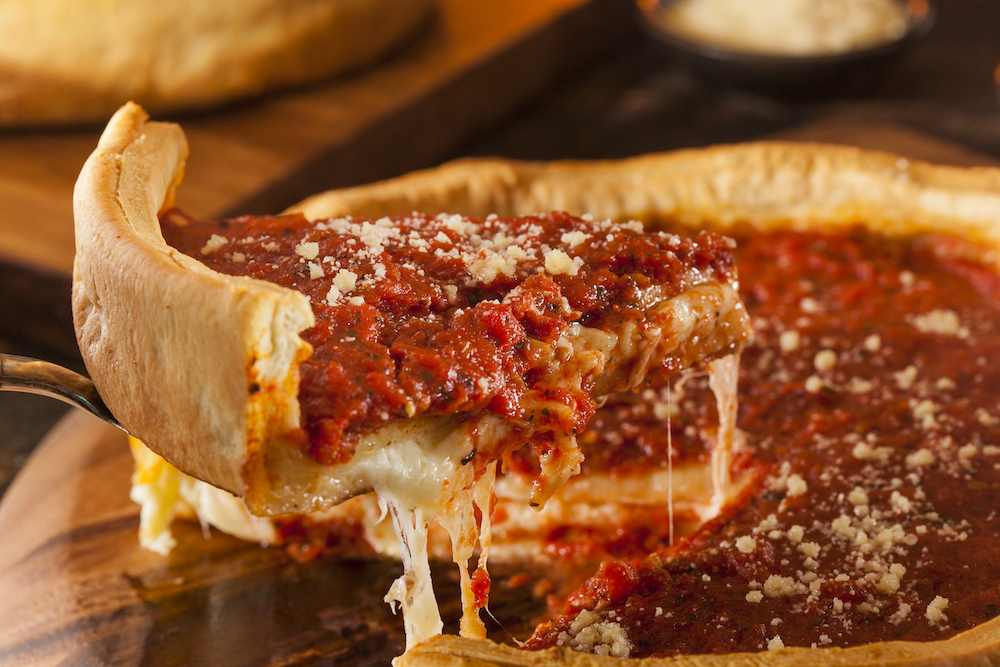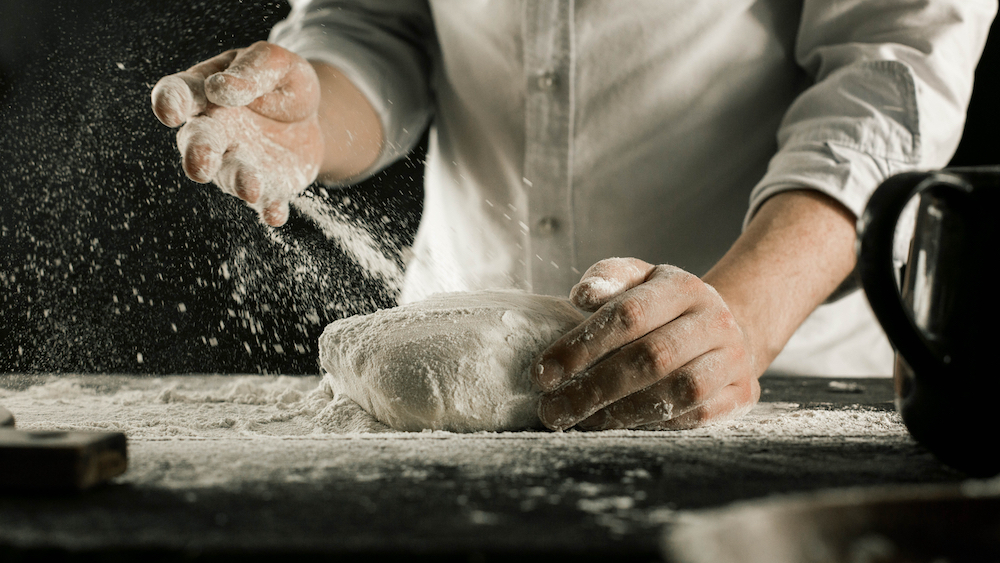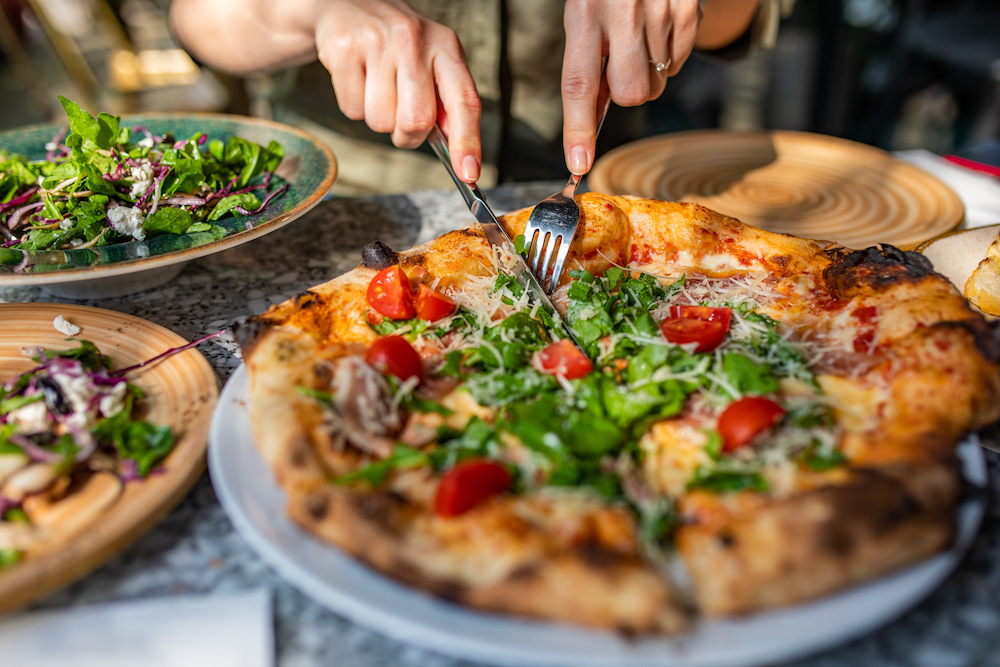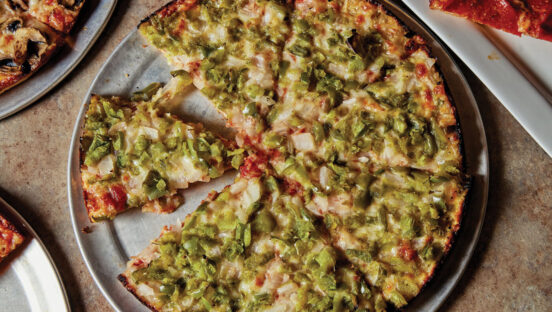By Ashley Harris
Pizza is one of the few things that brings joy across the board and around the world. Every country you’ll visit has its own style, every person you meet has a favorite topping combo, and there are countless types of dough, sauce recipes and toppings. It is a phenomenon that has swept the planet and shows no sign of slowing down; in fact in the U.S. alone, the market value of the pizza industry reached a staggering $56.5 billion.
And it doesn’t stop there: It’s estimated that 13% of the entire U.S. population eats pizza on any given day. Many think that the return of U.S. soldiers after WWII, who were craving European foods, led to the American pizza revolution; some even think it was major celebrities who did the trick, such as Dean Martin’s popular song, “That’s Amore.”
Whatever it was, it’s pretty much guaranteed that pizza is here to stay in the U.S. So it’s pretty safe to suggest that the pizza industry is a good one to be involved in. But, if you’re new to the business, how can you make sure your pizzeria stands out from the masses?
America’s Favorite Pizza Styles
Despite Domino’s dominance both domestically and abroad, what we are talking about here are the amazing styles of pizza on offer in the U.S. and not the mega-chains that control the market. Smaller pizzerias don’t have the luxury of being a household name (not yet anyway!), so they must turn to more creative marketing strategies to encourage foot traffic to their restaurants.
Many pizzerias partner with local tourism attractions, such as walking treasure hunts that take over the city with lots of hungry customers. Others utilize tech solutions such as QR codes for a more contactless, streamlined experience and list their businesses online, such as on Yelp, to capitalize through local SEO.
America is unique in that exploring its wonderful cities means you can experience different cultures and wildly varying pizza styles. These styles are not necessarily limited to the cities that created them, so where should you start? By comparing your product to the products around you and finding where you fit on the very broad pizza spectrum. The taxonomy of America’s pizza types is quite huge, from the Colorado Mountain Pie to the Ohio Valley-style pizza with a cooked base and raw toppings.
Here are a few of the best-known types of American pizza:
New York: New York’s version of pizza is likely one of the most famous and most widely consumed pizza styles in the country. The New York-style pizza will pretty much always be hand-tossed, cooked in a coal or brick oven, and place a large focus on the cheese. It can be greasy, but it will always be delicious. The base will be crisp and offer a good crunch, but there will also be the ‘bready’ texture of a slightly thicker, more glutinous dough.

Getty Images
Chicago Deep Dish: These doughy behemoths are enjoyed in and around Chicago but haven’t seemed to spread around the country in the same way as certain other styles. The first thing to bear in mind with a deep-dish pizza is that you probably won’t be finishing it alone. You’ll find a buttery, flaky crust and rich, indulgent toppings with plenty of cheese, marinara and, more often than not, pepperoni. Deep-dish pies are served at a thickness of 1” to 2” and may require the help of a knife and fork.
Neapolitan: The Neapolitan style is the closest to authentic Italian pizza that you’ll find on the market in the U.S., especially at pizzerias that have been verified by the Associazione Verace Pizza Napoletana (AVPN) and the Associazione Pizzaiuoli Napoletani (APN). We’re talking super-thin, crispy crusts with gorgeous air pockets and a tender bite. Fresh tomato sauce and straight-from-Italy cheeses and ingredients add to the mystique of this Euro-inspired classic. They will be hand-tossed and cooked in super-hot wood-fired ovens that heat up to 900° or 1,000°F.
California: The toppings are the star of the show on a California-style pizza. The base will be hand-tossed and cooked hot to give it a crispy bite, and the sauce will be fresh. Then the toppings come into play. The freshest, locally grown produce and gourmet ingredients—like Thai curry, grilled lobster and BBQ chicken—make this style a show stopper. The more gourmet the better!
Finding Your Place
Hopefully, you already have some clarity on your product and where you fit into the wonderful world of pizza. But what can you try that will excite, enthuse and captivate your customers? Here are some tips on the most important elements of pizza making that will give your customers that sought-after “wow moment” as they dig into every slice.

Getty Images
Dough: It should be obvious that your dough will be one of the crucial elements of your end product, but it can be overlooked by beginners. Make sure you have the perfect recipe for your pizza style, and don’t be afraid to mix it up and try something new. The flavor of the dough should reinforce everything on the pizza, and the texture it gives is crucial: No one wants a soggy base. For the best tips in dough-making, check out the late, great Tom Lehmann’s articles in PMQ’s Dough Information Center. They didn’t call him the Dough Doctor for nothing!
Sauce: If you go to Italy and ask around, many will tell you that the sauce is the most important pizza ingredient. It just won’t do to use pre-made sauce, so give your pizzas a boost by making your own. The difference is staggering. There are many ways to make a stunning sauce for your pizzas, but start by using high quality canned tomatoes, fresh basil and top-quality, delicious olive oil. If you’re a spice fan, try frying garlic in oil, adding chili for the last 30 seconds and then blending it into your sauce for a game-changing flavor.
Topping Combinations: This is where the real difference is made for many consumers. We eat with our eyes first after all. But there is a definite art to topping combinations; you can’t just throw a bunch of stuff on a pizza and call it done. It’s about balance and complementary flavors. Salty cheeses combined with sweet vegetables, spicy meats paired with creamy sauces, and vinegar-pickled treats that cut through fats really make people stand up and pay attention. Don’t be afraid to experiment, and test as many variations as you can. If you’re ever looking for inspiration, check out PMQ’s Recipe of the Month for some awesome ideas.
Ingredients: There are far too many pizza places offering pricey pizzas with sub-par ingredients. The profit margin on a pizza can be pretty good, so don’t be afraid to spend a bit extra on your ingredients; it will show in the end product. Freshly preparing your vegetables every day is a great way to go, and buying higher quality cheeses and meats will help deliver the wow factor you’ve been looking for.
The Extras: All good pizzerias offer a little something on the side, but it does not have to be a “major” item. Consider using an existing pizza dough and smothering it in fresh-cut garlic, herbs and oil for an amazing garlic bread. Offering alternative sauces can also entice customers or encourage them to try something new. Creamy sauces and BBQ bases are always popular, but why limit yourself to just that? Experiment with new recipes, and maybe you’ll change the game. Dessert pizzas are also popular at the moment and are a great revenue source for those with a soft spot for the sweet stuff.
The Last Slice
Whether you’re an established pizzeria looking to mix things up and earn some new clients or a new kid on the block hoping to change the game, these tips on giving customers a memorable pizza experience could be just what you need to produce the perfect slice and boost your sales. Don’t forget that everyone’s favorite pizza is different, and that’s okay. The world would be a very boring place if pizza was all the same.
Ashley Harris started her career in hospitality over 12 years ago and has a degree in Global Masters in Management. She is passionate about innovations in the hospitality and food sector and is looking to connect with other professionals in the industry. Follow her on Twitter: @ashley_harris91.















